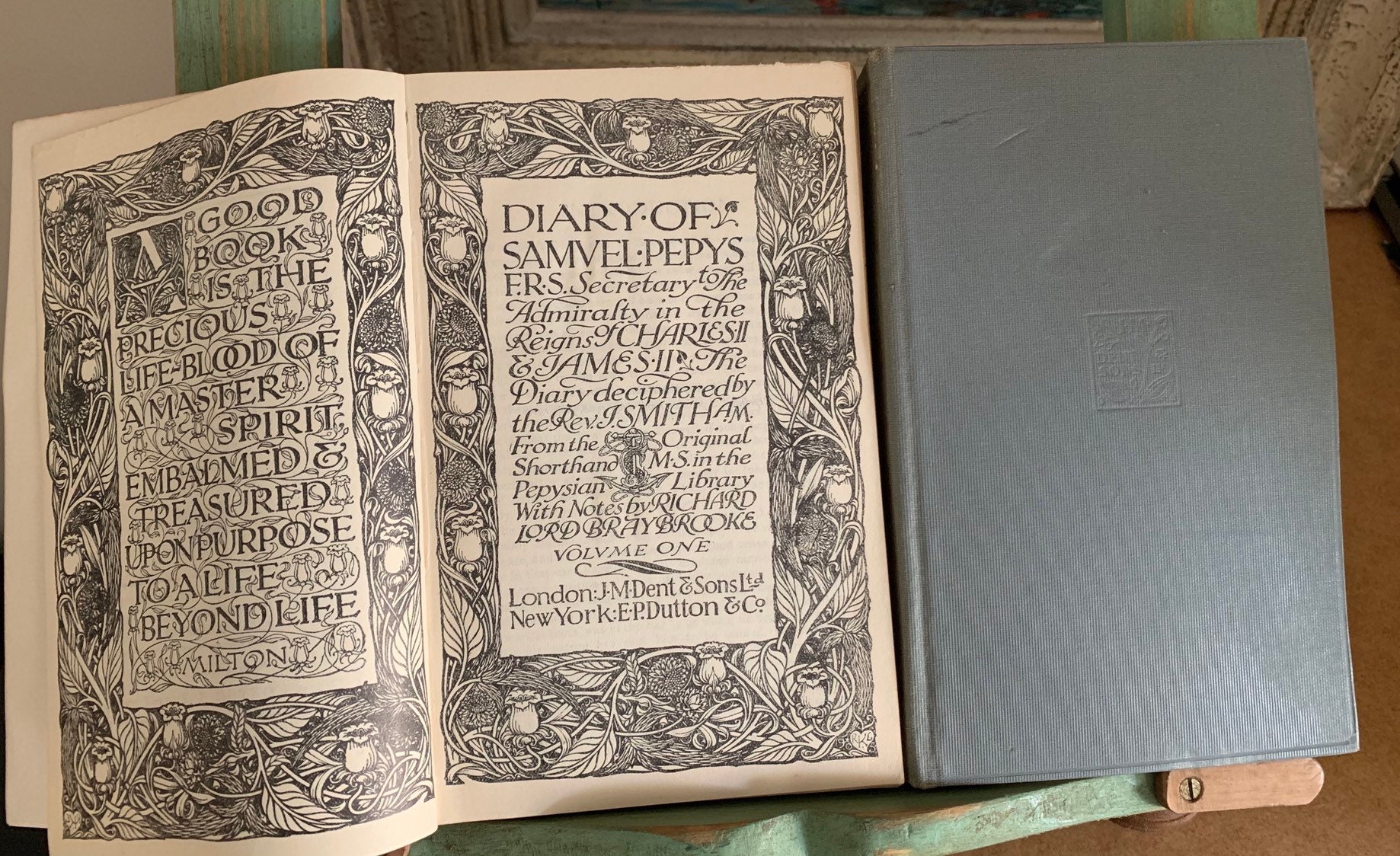

It provides a combination of personal revelation and eyewitness accounts of great events, such as the Great Plague of London, the Second Dutch War and the Great Fire of London.

The detailed private diary Samuel Pepys kept from 1660 until 1669 was first published in the 19th century, and is one of the most important primary sources for the English Restoration period. A fine copy, housed in the original blue cloth slipcase. Four maps of London in the 1660s (originally used as end-papers- here bound in at end). Pictorial title-page, two half-page illustrations, tail-piece and fifty-seven full page black & white plates. Two red morocco labels lettered in gilt, gilt board edges and turn-ins, marbled endpapers, all edges gilt. Spine with five raised bands, ornately tooled in gilt in compartments. 1950 by Riviére & Son(stamp-signed on verso of front free endpaper) in full blue polished calf, covers double-ruled in gilt, the front cover with a portrait of Samuel Pepys stamped in gilt. The result is a lively, often astonishing, diary and an unrivalled account of life in seventeenth-century London.Pepys, Samuel. All of this was set down in shorthand, to protect it from prying eyes. He records with searing frankness his tumultuous personal and professional life: the pleasures and frustrations of his marriage, together with his infidelities, his ambitions, and his power schemes. Clerk of the Acts and Secretary to the Admiralty. While Pepys was keen to hear the King's views, he was also ready to talk with a soldier, a housekeeper, or a child rag-picker. Pepys's diary gives vivid descriptions of spectacular events, but much of the richness of the diary lies in the details it provides about the minor dramas of daily life. He became eyewitness to some of the most significant events in seventeenth-century English history, among them, the Restoration of the monarchy in 1660 (he was in the ship that brought back Charles II from exile), the plague that ravaged the capital in 1665, and the Great Fire of 1666, described with poetry and horror. When Pepys is forced to flee his own home, the material possessions he chooses to save are more unusual, burying his wine and parmesan cheese in his garden to. Over the next nine years as he kept his journal, he rose to be a powerful naval administrator. When Samuel Pepys (1633–1703) began writing in 1660 he was a young clerk living in London, struggling to pay his rent.


 0 kommentar(er)
0 kommentar(er)
